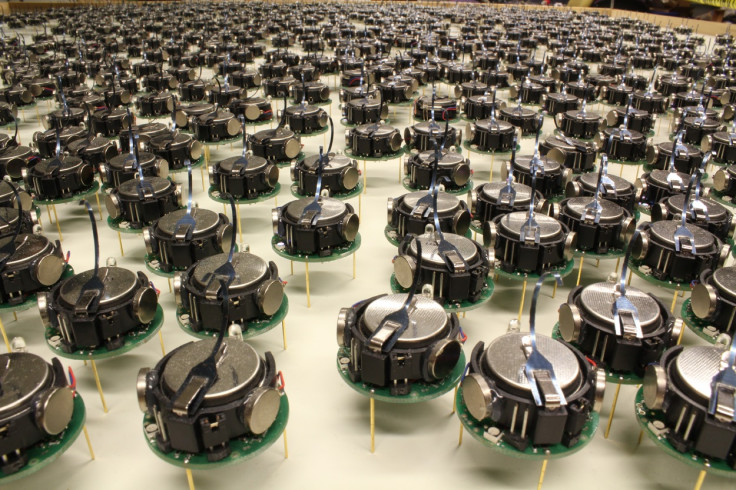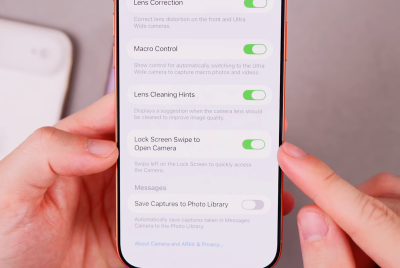Robot Flash Mob: Harvard Scientists Create Swarm of Thousand Self-Organising 'Kilobots'

The first ever robot flash mob has assembled at Harvard University, where a thousand autonomous bots have arranged themselves into vast, complex shapes.
"Form a sea star shape," directs a computer scientist, sending the command to 1,024 little robots simultaneously via an infrared light. The robots begin to blink at one another and then gradually arrange themselves into a five-pointed star. "Now form the letter K."
These robots are called Kilobots and at just a few centimetres wide, they are extremely simple. Yet to computer scientists, they represent a significant milestone in the development of collective artificial intelligence.
This self-organising swarm was created in the lab of Radhika Nagpal, at the Harvard School of Engineering and Applied Sciences.
"The beauty of biological systems is that they are elegantly simple—and yet, in large numbers, accomplish the seemingly impossible," said Nagpal. "At some level you no longer even see the individuals; you just see the collective as an entity to itself."
"We are especially inspired by systems where individuals can self-assemble together to solve problems," she added.
Michael Rubenstein, a lead author in the study and a research associate at Harvard SEAS and the Wyss Institute, said: "Biological collectives involve enormous numbers of cooperating entities—whether you think of cells or insects or animals—that together accomplish a single task that is a magnitude beyond the scale of any individual."
The Kilobots require no micromanagement or intervention once an initial set of instructions has been delivered.
Four robots mark the origin of a coordinate system, all the other robots receive a 2D image that they should mimic, and then using very primitive behaviours — following the edge of a group, tracking a distance from the origin, and maintaining a sense of relative location —they take turns moving towards an acceptable position.
The Kilobots also correct their own mistakes. If a traffic jam forms or a robot moves off-course, nearby robots sense the problem and cooperate to fix it. An infrared transmitter and receiver allow it to communicate with some of its neighbours and measure their proximity.
"Increasingly, we're going to see large numbers of robots working together, whether its hundreds of robots cooperating to achieve environmental cleanup or a quick disaster response, or millions of self-driving cars on our highways," added Nagpal.
The study is described in Science.
© Copyright IBTimes 2025. All rights reserved.






















